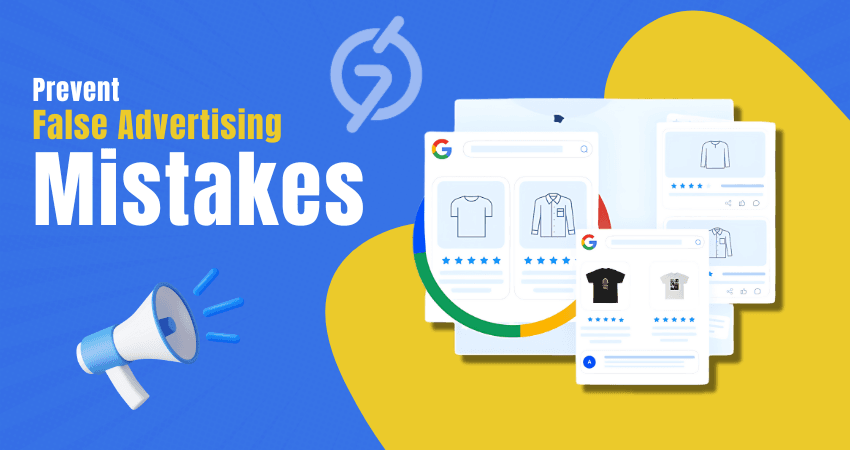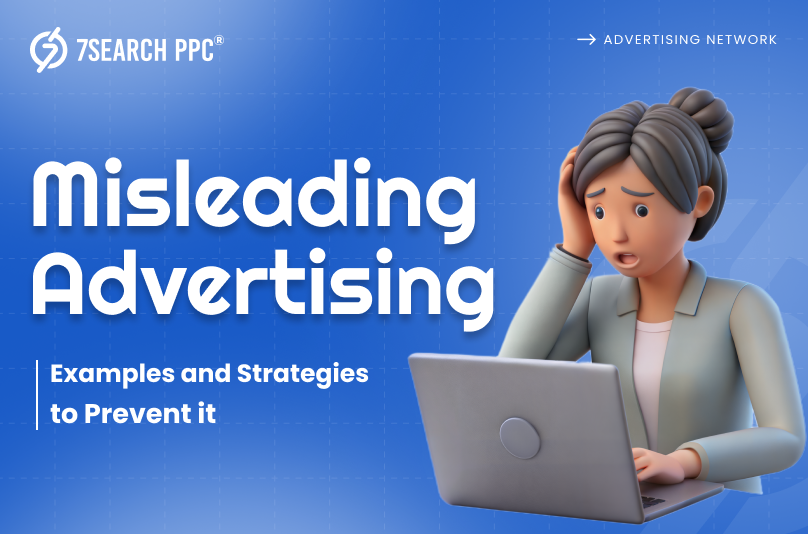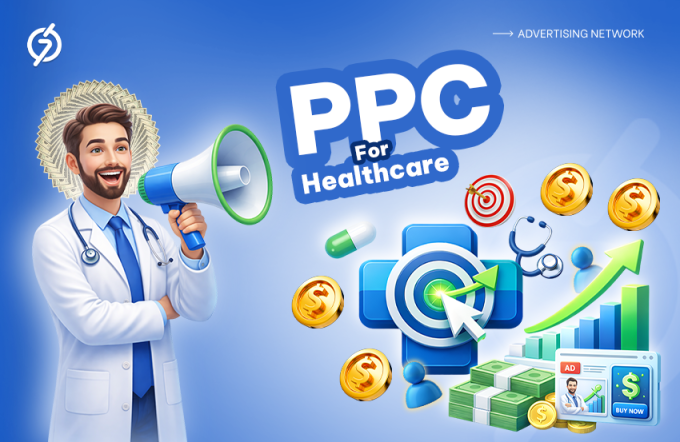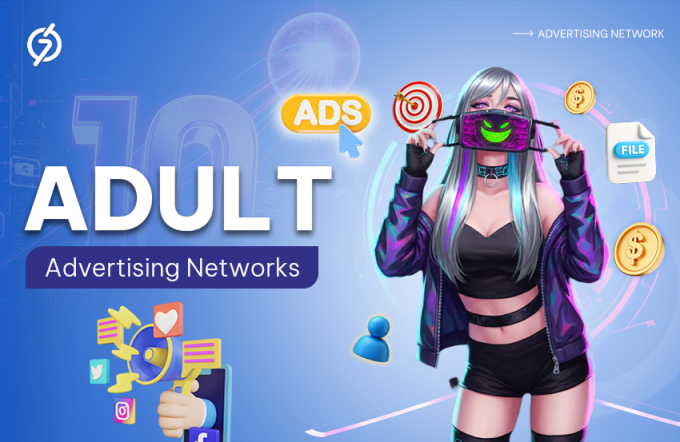Promising things in advertisements that are not true might seem like a good way to make quick money, but it’s not a good idea at all. If you deceive people into buying your products, they’ll be really upset when they realize the truth.
Not only will you lose those customers, but others will also know that you’re not trustworthy. Your business could face serious consequences from misleading advertising, including financial penalties.
It’s much better to be truthful with your customers. If you’re honest about your product, they will trust you. People prefer those businesses that are honest and transparent. In the race to get ahead, brands often include fallacies in their advertising. These mistakes can happen unintentionally or due to oversight.
We don’t want you to make a big blunder in your ad campaign, which is why we have researched examples of misleading advertising. In this blog, we will not only learn lessons from these false advertising examples but also explore strategies to prevent them.
Always Say No to Misleading Advertising
Imagine you’ve seen a digital ad for the “XYZ” brand, claiming that they are the number one in the world for providing organic products. The question is, which organization grants them this number one certificate? Do they truly offer only organic products? Upon researching, you discover that their claims are false and that you, along with others, have been duped by their misleading advertising tactics.
Misleading or false advertising is a tactic used by businesses to present their product or service in a deceptive way to attain their digital advertising objectives. This can involve:
- Exaggerating Claims
- Omitting Crucial Details
- Creating a False Impression
You might wonder why advertisers use such tactics. The answer is simple: to influence consumer choices. These tactics are not new; businesses have been using them for many years. Here are some data showing the impact of misleading advertising worldwide:
•Approximately 50% of consumers acknowledge being influenced by misleading or false advertising.
•False advertising leads to over $500 billion in losses for businesses worldwide each year.
•More than 80% of consumers report encountering false advertising.
•77% of brands consider false advertising a significant problem in the industry.
•Consumer trust in advertising has declined by 11% due to false advertising.
•70% of consumers claim they would cease purchasing from a brand if they discovered they were involved in false advertising.
These practices can destroy consumer trust and may result in legal consequences for the brand. Therefore, as an advertiser, you should always say no to a fallacy in advertising.
The Negative Impact of Misleading Advertising
Only a marketer can understand the importance of showing offerings (products or services) better than their rivals. However, they need to realize that there is a slight difference between ingenious advertising and deceptive advertising. When you ignore that difference, you might face some consequences, which are given below:
Damages Consumers’ Trust and Confidence
A brand’s success in the industry isn’t solely determined by the brand itself. While effective advertising efforts can set the stage and attract an audience, the ultimate decider of success is the consumer. Misleading advertising damages consumer trust and confidence, which is essential for any successful brand. When consumers feel deceived, they are less likely to buy from that brand again.
This way, the brand not only risks losing the consumer but may also experience additional after-effects. The loss of trust and confidence can spread rapidly through word-of-mouth and social media, which is enough to damage the brand’s reputation irreparably.
Legal Consequences: The Cost You Don’t Want To Pay
Misleading advertising is controlled by various rules, laws, and regulations that vary by country and industry. In the US, the Federal Trade Commission (FTC) and the Food and Drug Administration (FDA) are the main agencies that oversee these regulations.
False advertising is often illegal. Advertisers who engage in deceptive practices pay a high cost. The cost can be in any form, such as:
- Hefty fines
- Lawsuits
- Business closures
Regulatory bodies have strict guidelines to protect consumers, and violating these regulations can result in a cost that brands don’t want to pay.
Harms the Brand Reputation
It takes many years to build a good brand reputation and a few minutes to destroy it. A strong brand image is built on three base pillars: Trust, Honesty, and Credibility. Misleading advertising directly shakes these pillars and creates a negative perception in consumers’ minds.
Negative perceptions result from deceptive practices, which can tarnish a brand’s image in the industry. This makes it difficult to attract new customers and retain existing ones.
Steady Drop in Sales and Revenue
What do businesses want from their ad campaigns? High sales and significant revenue. If you use misleading advertising tactics, your sales might decline instead of achieving growth. Is this acceptable to you? Probably not, because you put effort and money into your ad campaign and the results you will get are disappointing.
65% of consumers are less likely to make a purchase from a brand that includes false information in its online ads. Consumers who feel misled are less likely to make a purchase. Short-term gains from deceptive advertising can be offset by long-term losses in sales and revenue.
High Marketing Costs to Regain Trust
Misleading advertising can put you on the back foot of the industry you are associated with. As a marketer, you look again to gain that position where you slipped because of the false advertising, whether intentional or unintentional. The marketing cost that you will pay is now higher than your previous one because you’ll need to invest more to rebuild trust and credibility with your audience.
Let’s take a real example: An Illinois court ordered Johnson & Johnson and Kenvue to pay $45 million to a family who claimed that the company’s talcum-based baby powder caused a relative’s death from cancer linked to asbestos exposure. This is the latest legal challenge the company faces related to its talc product.
Now, the giant company has two choices: close its operations or invest more to regain a good position in the industry.
Worldwide Cases: 5 Notorious Misleading Advertising Examples
Looking at and analyzing examples helps you understand concepts more clearly, and when it comes to misleading ad examples, you can identify and avoid potential pitfalls. We have researched five global cases of misleading or false advertising for you:
Volkswagen
Volkswagen, a big name in the automobile sector, faced major legal trouble due to its misleading advertising act. The company promoted its diesel cars as “clean and eco-friendly” through online ads on various platforms, but the US Federal Trade Commission found that they used a “defeat device” to cheat emissions tests.
This device made the cars seem compliant with environmental standards, while they were actually polluting far more. As a result, Volkswagen had to pay up to $10 billion in settlements and suffered severe damage to its reputation.
Red Bull
In 2023, Red Bull sold 12.1 billion cans worldwide, a huge increase from over four billion cans in 2011. In the United States, Red Bull is a top energy drink company, holding about 39.5% of the market. Believe it or not, Red Bull, known for its slogan “Red Bull Gives You Wings,” faced legal trouble over its advertising claims.
In 2014, the company settled a class action lawsuit for $13 million after being accused of misleading consumers by suggesting its drink offered benefits like improved physical performance and faster reaction times without scientific proof.
While Red Bull denied wrongdoing, it settled to avoid the cost of litigation. This case highlights the importance of honesty in advertising and reminds brands to ensure their claims are accurate to maintain consumer trust.
Kellogg
Kellogg Co., a major cereal brand, faced trouble for falsely advertising its Frosted Mini-Wheats. In 2009, the FTC charged Kellogg for misleading ads that claimed the cereal improved children’s attentiveness by 20% compared to those who skipped breakfast.
The actual study showed only 11% of kids saw such improvement, and about half showed any increase at all. This case highlights the need for accurate, credible data in advertising, especially for health claims. Misleading ads can lead to legal issues and harm a brand’s reputation, prompting Kellogg to rethink its marketing strategy and the industry to take note of truthful advertising practices.
Dannon’s Popular Activia Brand Yogurt
The next notorious example of misleading advertising is Dannon’s Activia yogurt. The company advertised the yogurt as “clinically” and “scientifically” proven to boost immunity and regulate digestion. This claim, promoted by Janie Lee Curtis, allowed Activia to be sold at 30% higher prices than similar products.
However, these benefits were unproven, which led to a $45 million class settlement in 2010. Trish Wiener was a consumer who filed a complaint against this company. Dannon was also required to remove such claims from its labels.
The company settled to avoid further legal costs despite denying any wrongdoing.
Skechers
Skechers USA, Inc. is a large American company that makes shoes and clothes. It was founded in 1992 and is based in Manhattan Beach, California. Today, it’s the third-largest shoe brand in the US. Skechers faced legal trouble over misleading ads for its Shape Up shoes, which claimed they could help users lose weight and tone muscles without going to the GYM for workouts.
In 2012, the company settled with the FTC for $40 million. This company admits its claims were unproven. This case underscores the need for accurate and evidence-backed advertising, especially when promoting health benefits.
How To Prevent False Advertising Mistakes
Preventing false advertising mistakes is crucial for maintaining credibility and avoiding legal trouble. Here are some steps you can take:

Be Transparent and Honest
We learned in childhood that “Honesty is the best policy.” However, this policy plays a crucial role in digital advertising, too. Why? Because honesty creates a trustworthy environment and builds credibility in the market. You should clearly show all aspects of your product or service in your online ads without leaving any room for question marks. Customers value transparency, so it’s important to be upfront about:
- Limitations,
- Conditions,
- Potential Downsides.
Never hide anything because some regulators are watching your every action. If they find that you are hiding information, they could take legal action against you and impose heavy fines.
Back Your Claims with Verifiable Proof
Today’s customers are more attentive than ever before. If you make any claims in your digital ads, ensure they are accurate and reliable. First of all, you need to control yourself from making any claims in your ads because customers will buy if they feel a genuine need for them.
If you do make claims, be prepared to provide sufficient proof to support them if challenged. Every claim in your advertising should be backed by solid proof. You can use verifiable data, research, or expert opinions to support your statements.
Take the Time to Review Advertising Laws
It’s important to understand and follow the rules for digital advertising. There are laws and guidelines that advertisers must follow. These rules help protect consumers and ensure fair competition. You must familiarize yourself with the advertising rules in your target GEOs.
Please note that each industry has its own specific rules and regulations to follow. For example, if you are doing business in the iGaming industry, you need to comply with iGaming industry regulations for smooth iGaming advertising.
Conduct Comprehensive Pre-Launch Reviews
Sometimes, your eyes can’t catch the mistake compared to a detailed inspection. Before your ad goes public, it is essential to review it carefully. You must invite different teams involved like:
- The legal team to ensure compliance with advertising rules
- The marketing team to verify that it is engaging and effective
- The customer support team to evaluate it from a consumer’s perspective
This helps catch any misleading information or potential problems before everyone sees your ad. It is like proofreading your ad to avoid any misleading advertising claims.
Conclusion
Misleading advertising is a risky approach that can severely damage a brand’s reputation. We have discussed the consequences of deceptive practices and five notorious examples of how famous brands have made costly mistakes. As marketers, we don’t want any hurdle caused by misleading ads that could damage our brand’s image in the industry.
By supporting your claims with verifiable evidence and staying informed about advertising laws, you can establish trust with your audience. Always remember that authentic and transparent advertising promotes long-term success, while misleading advertising might shut down your business. So, what will you choose?
Frequently Asked Questions (FAQs)
What is misleading advertising?
Ans. A misleading ad is when a company makes claims about its product or service that are untrue or exaggerated to trick people into buying.
Why do companies use misleading advertising?
Ans. Companies might use misleading ads to try to sell more products or make more money quickly.
What are the consequences of misleading advertising?
Ans. A Misleading ad can damage a brand’s reputation, lead to legal trouble, and lose customers.
How can companies avoid misleading advertising?
Ans. Companies should be honest and truthful in their advertising, and they should have proof to back up any claims they make.
What role does the government play in stopping misleading advertising?
Ans. Governments have agencies that regulate digital advertising and can take action against brands that break the rules.


















